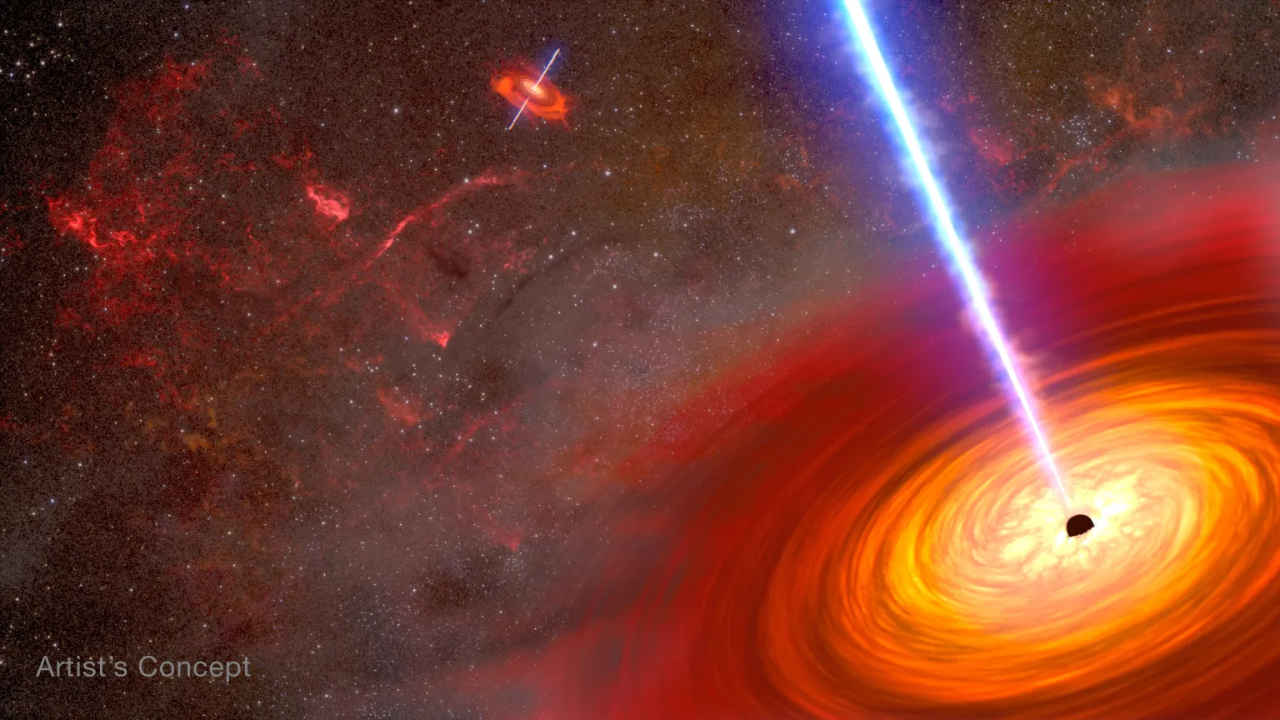NASA discovers supermassive black hole duo using Hubble and Chandra
NASA has discovered the closest pair of supermassive black holes ever observed.
This black hole duo was detected using NASA's Hubble Space Telescope and the Chandra X-ray Observatory.
These black holes, situated about 300 light-years apart, are buried deep within colliding galaxies.

In an exciting new discovery, NASA has found the closest pair of supermassive black holes ever observed. This black hole duo was detected using NASA’s Hubble Space Telescope and the Chandra X-ray Observatory. These black holes, situated about 300 light-years apart, are buried deep within colliding galaxies and shine brightly as active galactic nuclei (AGN), fueled by surrounding gas and dust.
 Survey
SurveyThis discovery stands out because it marks the closest AGN pair detected in the local universe using visible and X-ray light observations. While several dual black holes have been found in the past, they are usually much farther apart. The newly discovered pair, located in the gas-rich galaxy MCG-03-34-64, is a notable exception.
Also read: NASA finally discovers Earth’s long-sought global electric field: Check details
The discovery happened by chance. Hubble’s high-resolution images revealed three optical diffraction spikes. “We were not expecting to see something like this,” said Anna Trindade Falcao from the Center for Astrophysics | Harvard & Smithsonian, lead author of the study published in The Astrophysical Journal. “This view is not a common occurrence in the nearby universe, and told us there’s something else going on inside the galaxy.”
To confirm their findings, Falcao’s team turned to Chandra, which revealed two powerful sources of high-energy X-rays matching the bright optical points seen by Hubble. Further analysis with radio data from the Karl G. Jansky Very Large Array showed the black hole duo also emits strong radio waves. “When you see bright light in optical, X-rays, and radio wavelengths, a lot of things can be ruled out, leaving the conclusion these can only be explained as close black holes,” Falcao explained.
Also read: NASA discovers mysterious object escaping the Milky Way at high speed
The third bright source observed by Hubble remains unexplained but might be related to gas affected by a jet of high-speed plasma from one of the black holes.
These supermassive black holes, originally at the centers of their galaxies, were brought together by a galaxy merger. They are expected to spiral closer and eventually merge in about 100 million years.
This discovery highlights the ongoing contributions of Hubble and Chandra in expanding our understanding of the universe.
Ayushi Jain
Ayushi works as Chief Copy Editor at Digit, covering everything from breaking tech news to in-depth smartphone reviews. Prior to Digit, she was part of the editorial team at IANS. View Full Profile